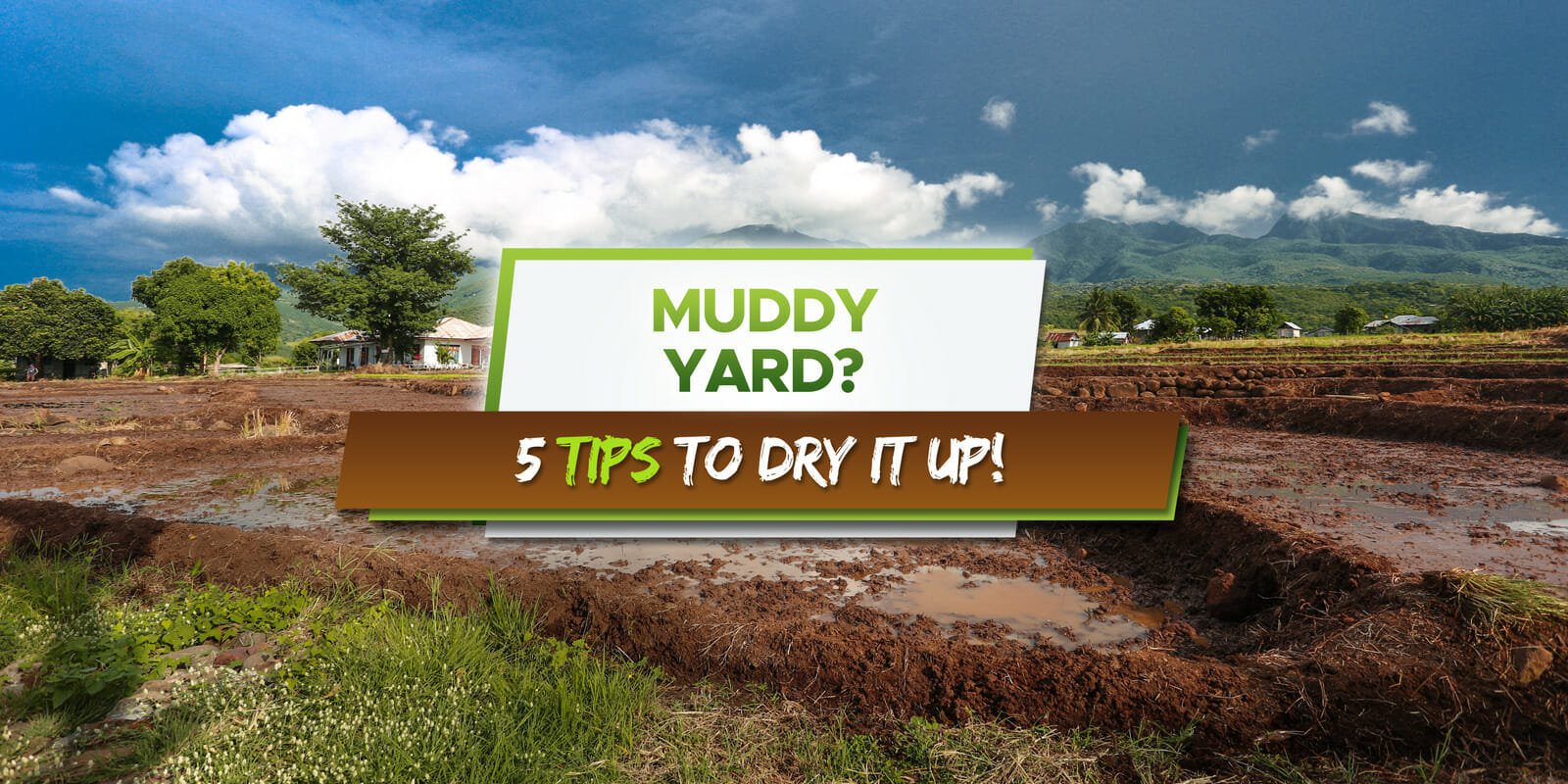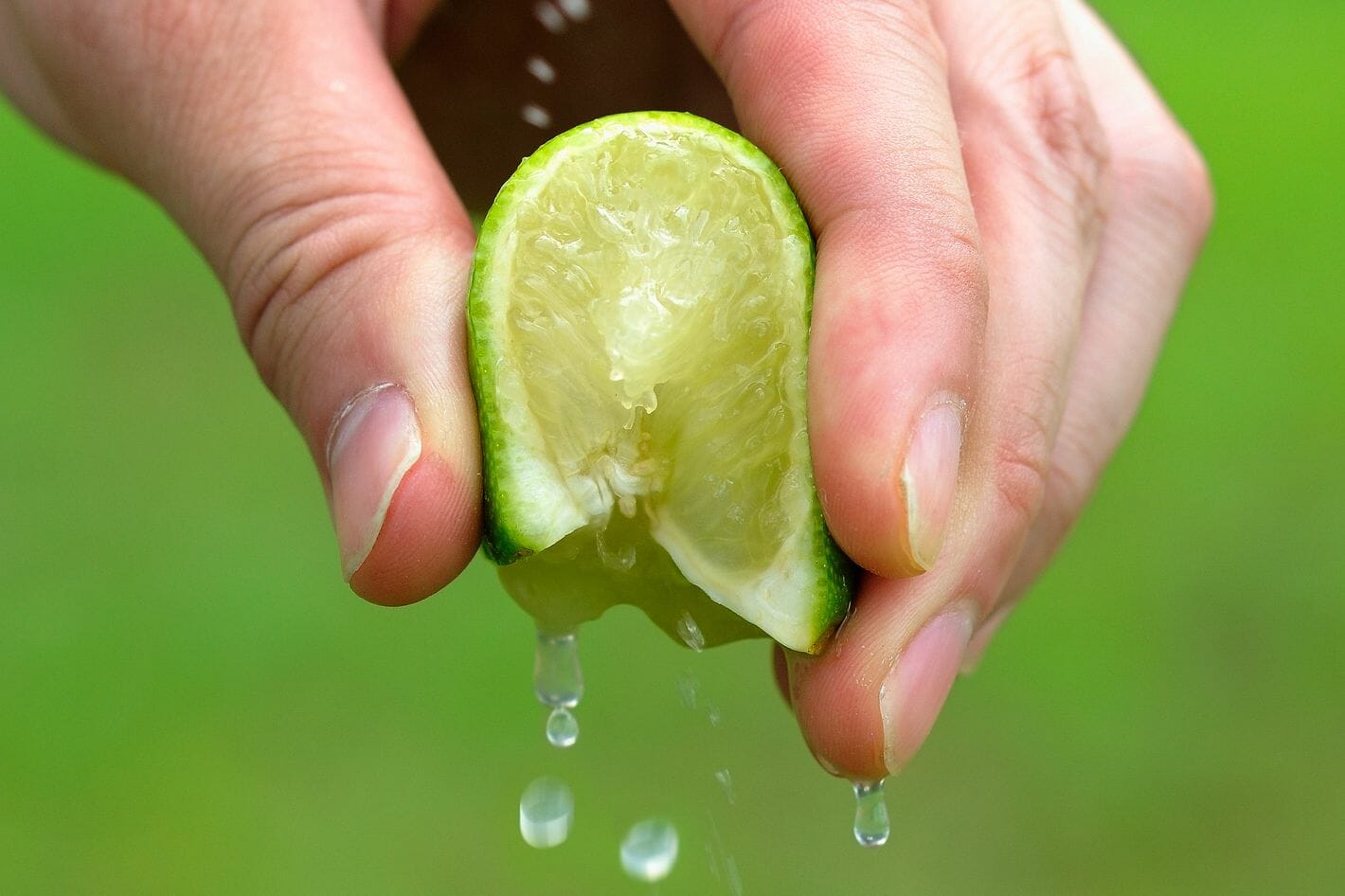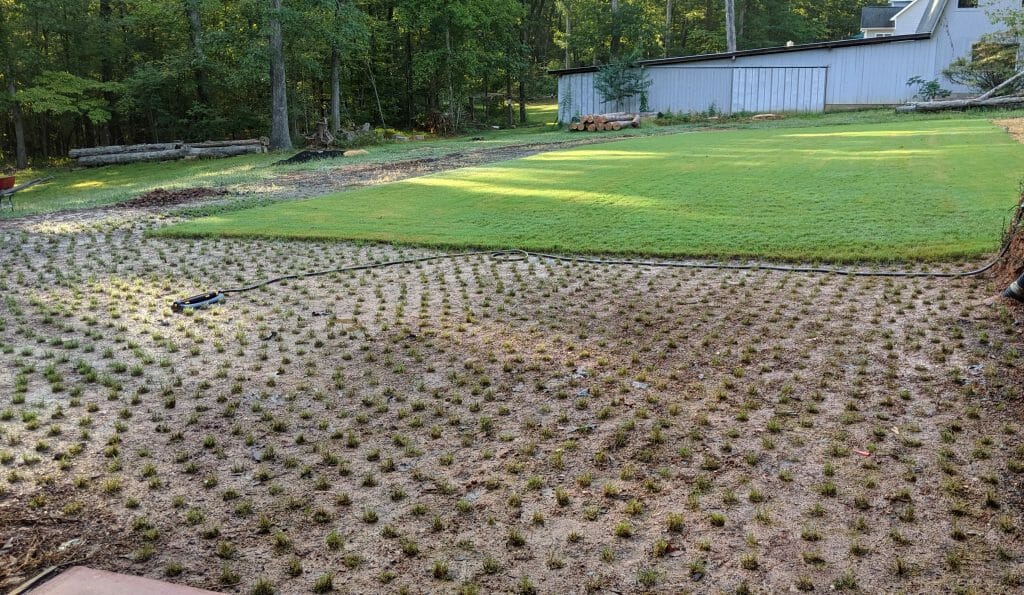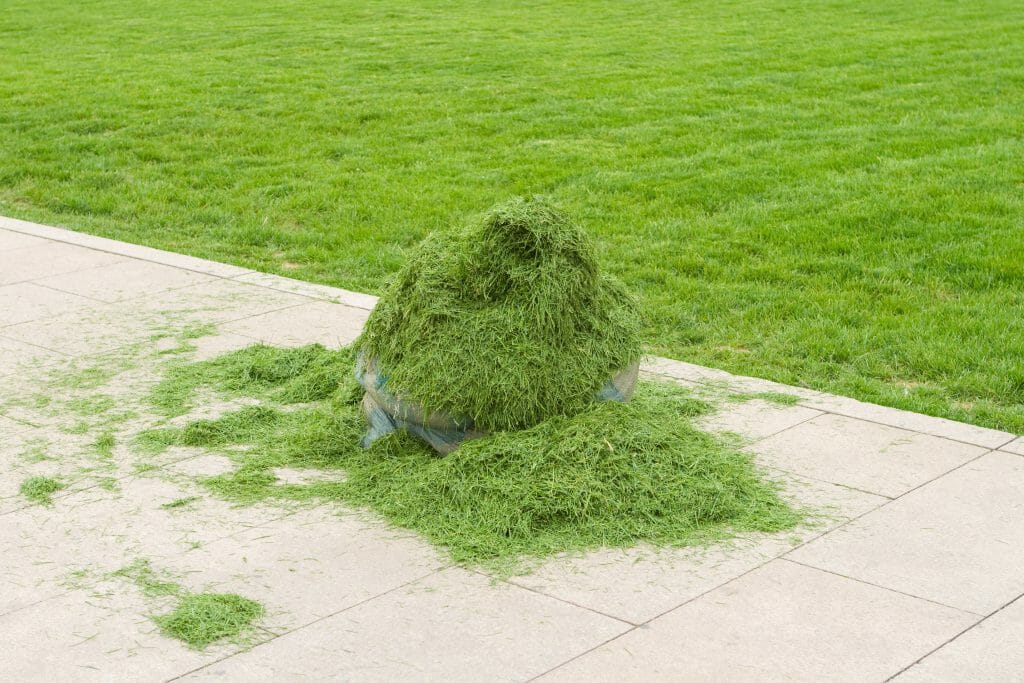Every gardener enjoys getting some decent rainfall. Our plants love it, and it leaves our gardens nourished and green.
However, there’s such a thing as too much rain, and, before you know it, you have a mud pile taking over your yard. This is hugely frustrating and will leave you wondering:
How do I dry up my muddy yard?
In the short term, you can dry up a muddy yard using lime or sawdust, but in the long term, you can install a French drain or dethatch your lawn.
This is a really messy business, but don’t worry; we’re here to help.
This article is going to get down and dirty to help you figure out, once and for all, how to dry up your muddy yard and prevent it from happening again.
Why is Your Yard Getting Muddy?
This may seem like an obvious question because rain is usually the culprit for your yard getting muddy, but have you ever wondered if some elements in your yard could be making the problem worse?
These are a few things that might be going wrong in your garden:
- Poor drainage
This can be caused by landscaping issues, water collecting in certain areas, and the level of your grass.
- Traffic wear
If you or your pets regularly walk a particular path across your grass, the grass will eventually wear away. This will result in a muddy spot after rain.
Often, these elements are out of your control but don’t worry; we have some solutions for you.
5 Tips on How to Dry Up a Muddy Yard
1. French Drain
If you are looking for a long-term solution, then a French drain might be for you.
But what exactly is a French drain? It is, essentially, a trench filled with gravel and rock. A perforated pipe runs through the drain, which collects and redirects surface or groundwater to a more appropriate location.
These drains are ideal for gardens that have poor drainage.
This is a more costly solution that will have to be installed by a professional, but it will be worth it in the long run.
2. Pine Needles or Sawdust
If you are looking for a quick, temporary solution, pine needles and sawdust are great choices.
They are cheap to pick up and completely organic, so that they won’t damage your lawn.
All you need to do is sprinkle the needles or sawdust across the surface and leave them to sit for two hours. They will absorb the moisture while remaining on the soil’s surface due to their size.
3. Add Organic Material
This is a solution we suggest preempting the mud rather than applying when the area is already muddy.
Clay soils tend to drain poorly, leading to water sitting on the surface. However, if you loosen the soil up and aerate it, it should start to drain without a problem.
We suggest using mulch or peat moss and digging it through the topsoil during a dry period; you’re sure to notice the difference next time it rains.
4. Add Lime
Lime is a speedy and easy solution to dry up your yard.
Hydrated lime or quick lime is a very cheap and fast solution to drying up a muddy area, especially if you have clay or silty soil.
Bags of lime can be bought at your local garden store and easily applied at home by hand. Once it has been sprinkled across the garden in the quantities indicated on the packaging, you can mix the lime through the top layer of mud.
Leave it to work for a day before compacting the area.
5. Dethatch Your Lawn
One issue that could be causing your soil to retain water is ‘thatching’ sitting underneath your grass.
Thatching is old grass that has died and formed a layer underneath the new grass. This makes it hard for the groundwater to be absorbed.
To fix this issue, we suggest raking the surface and maybe using a lawn aerator once a year to eliminate any thatch that has built up. This is ideally done just before your rainy season.
Frequently Asked Questions:
What’s the cheapest way to cover up dirt in your backyard?
If you have a stubborn area of dirt in your yard that gets muddy very easily, you may consider covering it up.
The cheapest and least laborious option is to plant squares of turf over the area. We recommend using creeping grass to cover a larger area with fewer squares.
Is clover a better lawn than grass?
Clover lawns have started to pop up recently, and for a good reason.
Not only are clover lawns beautiful, but they are also eco-friendly and grow in very tough growing environments. It also works to fix the nitrogen levels in your soil, which will benefit all your plants.
Conclusion
Muddy yards are messy and just plain unattractive, but there are a few things you can do to fix the situation.
We have presented you with a mix of long and short-term solutions to dry up a muddy area in no time. Overall, we recommend a French drain as a long-term solution because it will solve the problem once and for all.
However, if you are on a budget or this is only an occasional issue, we suggest using cheaper options like pine needles or dethatching your lawn.
Whatever your situation, we hope this has given you all the ideas you need to solve your muddy problems.






